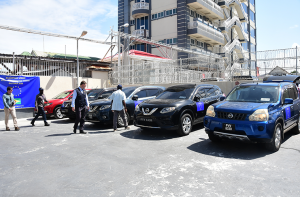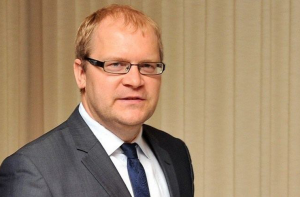A TEAM of 14 European Union (EU) observers was deployed on Tuesday for long-term observation of Guyana’s General and Regional Elections.
At a briefing from the EU delegation on Tuesday, Deputy Chief Observer of the EU Election Observation Mission, Alexander Matus, told media operatives that a team of experienced observers was organised following an invitation from President David Granger.
The mission will be led by Chief Observer, Urmas Paet, an Estonian politician and Member of the European Parliament from Estonia. Paet is expected to officially launch the observation mission at a press conference on Thursday at the Marriott Hotel.

The observers deployed on Tuesday departed en route to their respective bases across Guyana for coverage of all 10 administrative regions. “All 14 long-term observers are very experienced. They come from 13 different EU Member States and Norway. In the last three days, they received extensive training about the electoral, political, legal, media, security and logistics aspects of their work in the field,” Matus said.
Meanwhile, a core team of nine experts will be present in the country along with 20 short-term observers and possible diplomats accredited to the diplomatic missions of Guyana. “There will be a core team of analysts based here in Georgetown; we will have long-term observers who will be deployed for six weeks across the country and shortly before Election Day we’ll have also short term observers who will be deployed before, during and after Election Day,” Matus said.

The Deputy Chief Observer said that Guyanese can expect these officials to be the “eyes and ears” of the mission who will report periodically to the core team in Georgetown to help the EU observer team to make informed decisions about the electoral process.
The observer mission will also be having meetings with the Guyana Elections Commission (GECOM) and other elections stakeholders such as political parties, civil society organisations and religious authorities. While the mission will not be reporting to GECOM, it will be making its step-by-step findings available to the public.



.jpg)








